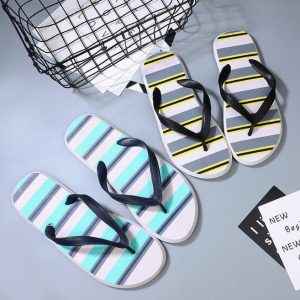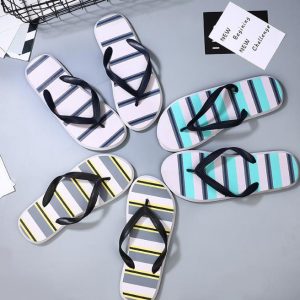Ergonomic flip flop design is a science that focuses on creating footwear that provides optimal comfort, support, and biomechanical alignment for the wearer’s feet. The goal is to minimize stress and strain on the feet, ankles, and legs, thereby reducing the risk of foot-related injuries and discomfort. Here are some key aspects of the science behind ergonomic flip flop design:
- Arch Support: Ergonomic flip flops often feature contoured footbeds with built-in arch support. This helps maintain the foot’s natural arch shape, reducing overpronation (excessive inward rolling of the foot) and providing better stability.
- Heel Cup and Cushioning: A well-designed ergonomic flip flop includes a deep heel cup to cradle the heel and provide support. Additionally, they may have adequate cushioning in the heel area to absorb impact during walking.
- Toe Grip: Ergonomic flip flops may have a slight upward curve or a toe grip feature, which helps to keep the toes engaged and prevents excessive gripping with the toes to hold the flip flops in place, reducing foot fatigue.
- Materials: High-quality and supportive materials, such as EVA (ethylene-vinyl acetate) foam or rubber, are often used in the construction of ergonomic flip flops. These materials offer cushioning and support while remaining lightweight and flexible.
- Anatomical Shape: The shape of ergonomic flip flops is designed to align with the natural contours of the foot, promoting proper foot mechanics and reducing stress on the feet and joints.
- Stability and Traction: Ergonomic flip flops may have textured or patterned outsoles to enhance traction and stability, reducing the risk of slipping and twisting.
- Adjustable Straps: Some ergonomic flip flops come with adjustable straps or buckles, allowing wearers to customize the fit to their feet, providing a more secure and comfortable feel.
- Biomechanical Research: The design of ergonomic flip flops is often informed by biomechanical research, which involves studying the movement and forces applied to the foot during walking and other activities. This research helps identify areas of improvement for flip flop design to reduce stress and strain on the feet.
It’s important to note that while ergonomic flip flops can offer improved support and comfort compared to traditional flat flip flops, they may not be suitable for all-day wear or rigorous activities. For intense outdoor activities or long walks, closed-toe sandals or supportive shoes are generally more appropriate. As with any footwear, finding the right fit and considering individual foot anatomy and needs is crucial for achieving the best comfort and support.


















